Sigma 12-24 mm f/4.5-5.6 II DG HSM
8. Vignetting
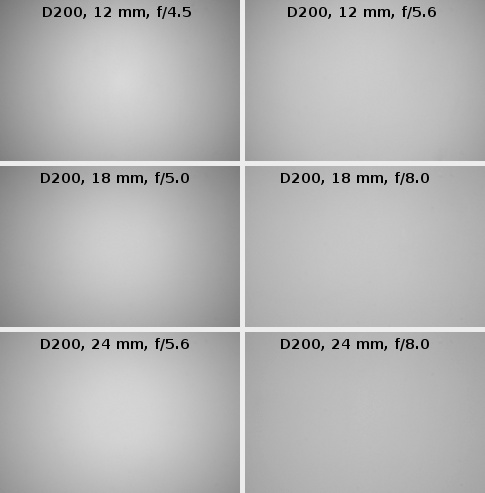
At the shortest focal length and the maximum relative aperture the vignetting reaches a high value of 41% (-1.54 EV). It decreases to 25% (-0.85) on stopping down the lens to f/5.6. By f/8.0 aperture the brightness loss in the corners of the frame amounts to 17% (-0.54 EV). Further stopping down doesn’t cause a measurable decrease of vignetting.
Please Support UsIf you enjoy our reviews and articles, and you want us to continue our work please, support our website by donating through PayPal. The funds are going to be used for paying our editorial team, renting servers, and equipping our testing studio; only that way we will be able to continue providing you interesting content for free. |
- - - - - - - - - - - - - - - - - - - - - - - - - - - - - - - - - - - - - - - - - - - - - - - -
In the case of 18 mm focal length and f/5.0 aperture the light fall-off in the frame corners is 37% (-1.34 EV).On slightly stopping down to f/5.6 we see this aberration decrease to 30% (-1.04 EV). By f/8.0 the vignetting reaches the value of 16% (-0.52 EV) and on stopping down to f/11 it decreases by the next 1%.
At the maximum focal length and the maximum relative aperture the vignetting gets to 31% (-1.06 EV). What’s interesting, by f/8.0 and f/11 it is within the margin of error the same, amounting to 15% (-0.47 EV).
This not exactly a great performance on the small detector but is just a prelude to what can be seen on full frame. The appropriate photos are shown below.
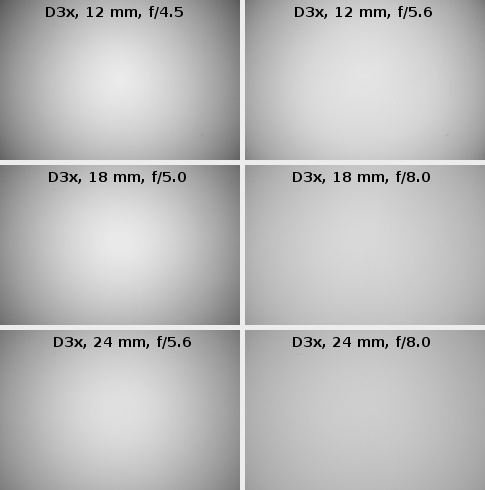
The combination of 12 mm focal length and f/4.5 aperture forces you to resign yourself to a really huge level of vignetting – 59% (-2.59 EV). Reducing the relative aperture helps but doesn’t make the problem disappear. By f/5.6 we still deal with the brightness loss amounting to 45% (-1.73 EV) in the corners and by f/8.0 it reaches 30% (-1.05 EV). Even applying the f/11 aperture doesn’t eliminate the problem completely because the vignetting is 25% (-0.85 EV) there so it still remains visible.
In the middle of the focal range the situation is a bit better. At the maximum relative aperture we got the vignetting as high as 52% (-2.10 EV) and by f/5.6 it amounted to 44% (-1.67 EV). Even by f/8.0 and f/11.0 it was still visible reaching 28% and 24% respectively.
At the maximum focal length the problems are the fewest but it doesn’t mean that they are negligible. In the case of f/5.6 aperture we must take into account the fact that the light fall-off might reach up to 45% (-1.72 EV). By f/8.0 that aberration decreases to the level of 25% (-0.84 EV). It is not much lower by f/11 and by f/16 where it is 21% (-0.68 EV).
As you can notice, the vignetting is a considerable problem in the case of the Sigma 12-24 II, no matter whether you work on a smaller or bigger sensor. It is bothersome throughout the whole focal range and for the major part of aperture range. You should remember though that with such angles of view a noticeable decrease of the vignetting level would have to entail a distinct increase of the lens’s dimensions.
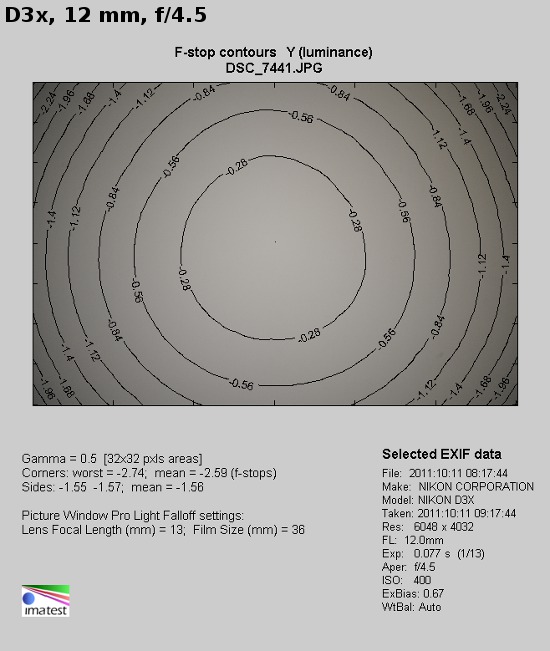 |
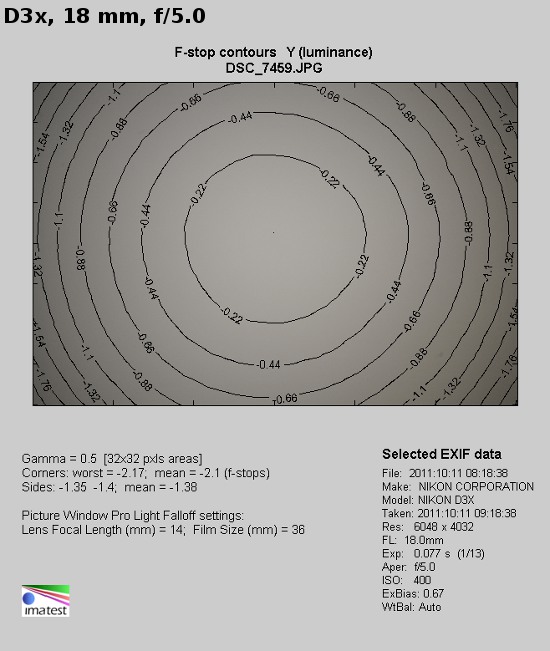 |
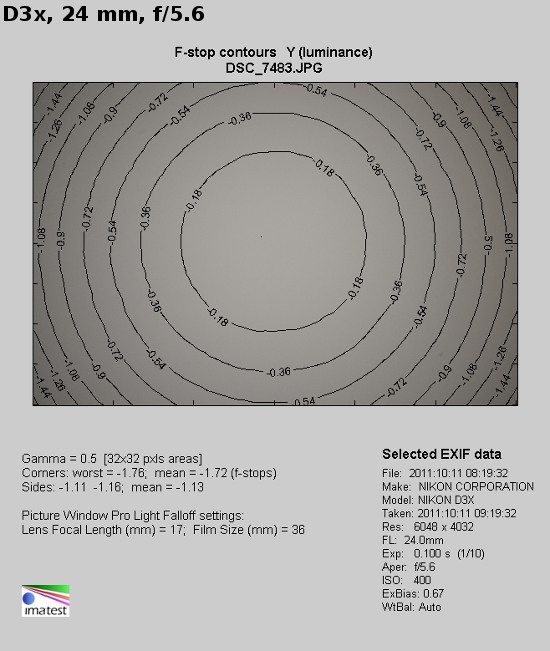 |






